
Mino da Fiesole, also known as Mino di Giovanni, was an Italian sculptor from Poppi, Tuscany. He is noted for his portrait busts.
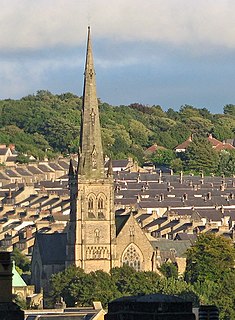
Lancaster Cathedral, also known as The Cathedral Church of St Peter and Saint Peter's Cathedral, is a Roman Catholic cathedral in Lancaster, Lancashire, England. It was a Roman Catholic parish church until 1924, when it was elevated to the status of a cathedral. It started as a mission church in 1798, and the present church was built on a different site in 1857–59. It was designed by E. G. Paley in the Gothic Revival style and is a grade II* listed building. In 1901 a baptistry was added by Austin and Paley, and the east end was reordered in 1995 by Francis Roberts. The cathedral is in active use, arranging services, concerts and other events, and is open to visitors.
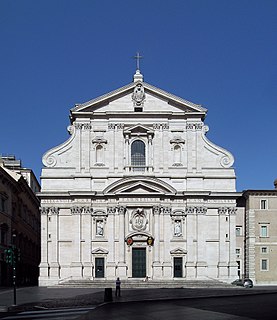
The Church of the Gesù is the mother church of the Society of Jesus (Jesuits), a Catholic religious order. Officially named Chiesa del Santissimo Nome di Gesù all'Argentina, its facade is "the first truly baroque façade", introducing the baroque style into architecture. The church served as a model for innumerable Jesuit churches all over the world, especially in the Americas. Its paintings in the nave, crossing, and side chapels became models for Jesuit churches throughout Italy and Europe, as well as those of other orders. The Church of the Gesù is located in the Piazza del Gesù in Rome.
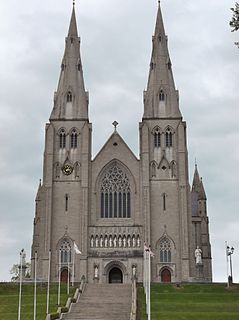
St. Patrick's Cathedral in Armagh, Northern Ireland is the seat of the Catholic Archbishop of Armagh, Primate of All Ireland. It was built in various phases between 1840 and 1904 to serve as the Roman Catholic Cathedral of the Archdiocese of Armagh, the original Medieval Cathedral of St. Patrick having been appropriated by the state church called the Church of Ireland at the time of the Irish Reformation.
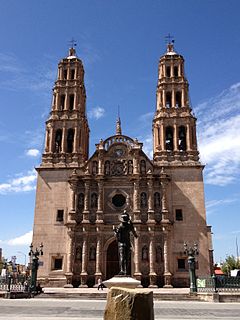
The Metropolitan Cathedral Church of the Holy Cross, Our Lady of Regla, and St Francis of Assisi is the main ecclesiastical building of the Catholic Church in Chihuahua City, Chihuahua, Mexico. It is considered perhaps the finest example of colonial architecture in northern Mexico and it was built between 1725-1792. The cathedral is also the seat of the Roman Catholic Archdiocese of Chihuahua. As of 2013 the archbishop was Constancio Miranda Weckmann.
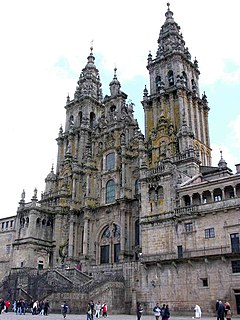
Churrigueresque, also but less commonly "Ultra Baroque", refers to a Spanish Baroque style of elaborate sculptural architectural ornament which emerged as a manner of stucco decoration in Spain in the late 17th century and was used up to about 1750, marked by extreme, expressive and florid decorative detailing, normally found above the entrance on the main facade of a building.

The Metropolitan Cathedral of the Assumption of the Most Blessed Virgin Mary into Heaven is the cathedral church of the Roman Catholic Archdiocese of Mexico. It is situated atop the former Aztec sacred precinct near the Templo Mayor on the northern side of the Plaza de la Constitución (Zócalo) in the historic center of Mexico City. The cathedral was built in sections from 1573 to 1813 around the original church that was constructed soon after the Spanish conquest of Tenochtitlan, eventually replacing it entirely. Spanish architect Claudio de Arciniega planned the construction, drawing inspiration from Gothic cathedrals in Spain.
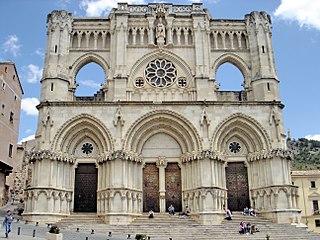
Cuenca Cathedral is a Gothic cathedral in the city of Cuenca, located in the Province of Cuenca in the Castile-La Mancha region of south-eastern central Spain. The building is one of the earliest Spanish examples of Gothic architecture, built at a time when the Romanesque style predominated in the Iberian Peninsula. In particular, the cathedral is characteristic of the Norman and Anglo-Norman architecture of the 12th century, of which Soissons Cathedral, Laon Cathedral and Notre-Dame de Paris are representative examples.

Andrea di Cristoforo Bregno (1418–1506) was an Italian sculptor and architect of the Early Renaissance who worked in Rome from the 1460s and died just as the High Renaissance was getting under way.
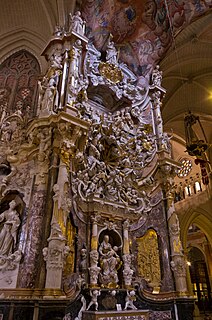
Narciso Tomé (1690–1742) was a Spanish architect and sculptor of the late-Baroque or Rococo period.

The Cathedral of San Cristóbal de La Laguna or Catedral de Nuestra Señora de los Remedios is a Roman Catholic church in Tenerife, Spain. Begun in 1904 and completed in 1915, it is dedicated to the Virgin of Los Remedios. The cathedral is the mother church of the diocese, which includes the islands of Tenerife, La Palma, La Gomera and El Hierro in the province of Santa Cruz de Tenerife. It is therefore where the episcopal seat of the bishop of this diocese, currently occupied by Bishop Bernardo Álvarez Afonso. This is one of the most important churches of the Canary Islands.
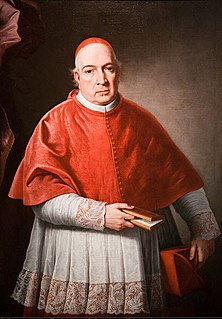
Diego de Astorga y Céspedes was a Spanish Cardinal of the Roman Catholic Church. He also served as Bishop of Barcelona, Archbishop of Toledo and Grand Inquisitor.

The Cathedral of Sigüenza, officially Catedral de Santa María de Sigüenza, is the seat of the bishop of Sigüenza, in the town of Sigüenza, in Castile-La Mancha, Spain. It was declared Bien de Interés Cultural in 1931.
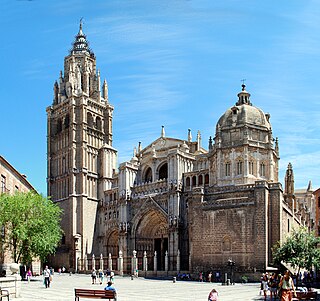
The Primatial Cathedral of Saint Mary of Toledo, otherwise known as Toledo Cathedral, is a Roman Catholic church in Toledo, Spain. It is the seat of the Metropolitan Archdiocese of Toledo.

The Cathedral of the Holy Angels is a Catholic cathedral located in Gary, Indiana, United States. It is the seat of the Diocese of Gary, and the home of Holy Angels Parish.

The Abbey of Santa Giustina is a 10th-century Benedictine abbey complex located in front of the Prato della Valle in central Padua, region of Veneto, Italy. Adjacent to the former monastery is the basilica church of Santa Giustina, initially built in the 6th century, but whose present form derives from a 17th-century reconstruction.

The Cathedral of Barcellona Pozzo di Gotto or Duomo of Saint Sebastian or Duomo of Barcellona Pozzo di Gotto, exact full name Minor Basilica of Saint Sebastian, is a basilica cathedral in Barcellona Pozzo di Gotto, Sicily, Italy.

The Iglesia de Santo Tomé is a church located in the historical center of the city of Toledo (Spain), and was founded after the reconquest of this city by King Alfonso VI of León. It appears quoted in the 12th century, as constructed on the site of an old mosque of the 11th century. This mosque, together with other mosques in the city, were used as Christian churches without major changes, since in the taking of the city there was no destruction of buildings.

Holy Name of Jesus Cathedral is a Catholic cathedral that is the seat of the Diocese of Raleigh, replacing Sacred Heart Cathedral.
Tugal Caris, also spelled Carris or Cariste, was a 17th-century French sculptor and architect.




















